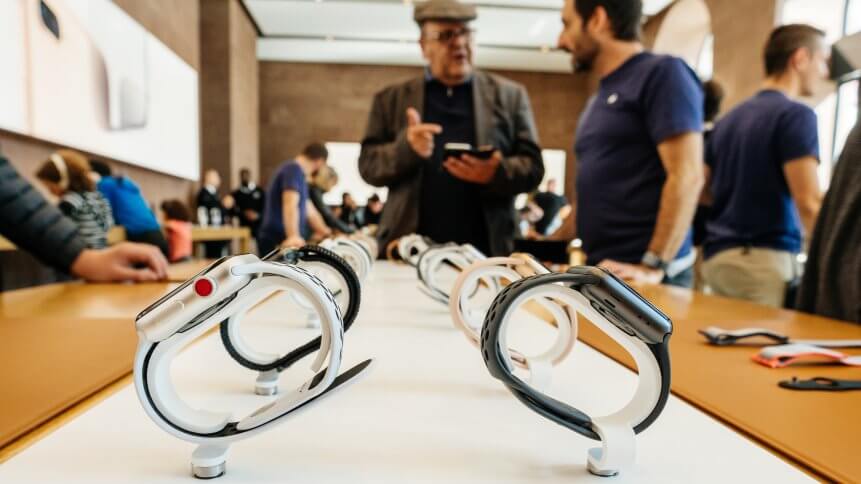Why wearable tech has its place in business

From the development of smartwatches, medical patches, and immersive experience headsets, the wearables market has sought to capitalize on consumer use, especially as lifestyle accessories.
But now the industry is set to reach a worth of US$5.4 billion in market value by 2023, and much of that could be driven by a rise in enterprise utility, as businesses discover how useful the technology can be.
“The wearable tech theme incorporates more than just wrist-worn devices,” said Ed Thomas, Principal Analyst for Technology Thematic Research at GlobalData. “Smart earwear, or ‘hearables’, has become a more prominent category with the emergence of devices that incorporate voice-activated virtual assistants such as Apple’s Siri and Google’s Assistant.
“Over the next few years, wearable devices will become smarter, as they incorporate technologies like artificial intelligence and augmented reality and so their relevance, particularly to enterprise users across industries, will only increase.”
Today, sectors including healthcare, insurance, finance, and logistics are embracing wearable technology.
“I’m amazed that wearables haven’t taken over corporate America,” said HSBC’s Head of Innovation, Jeremy Balkin.
In 2018, the international bank adopted smartwatches in its flagship branch — Manhattan.
HSBC equipped a dozen bank associates with advanced smartwatches to examine how mobile technology can streamline communications and operations. Staff was able to discretely send preset messages to the most relevant individuals or departments to handle a customer’s request and then receive an immediate reply. They could ‘ping’ the branch manager, for example, if they required an override.
The result was a more seamless, customer-focused operation, that both supplements the face-to-face interaction customers still overwhelmingly prefer while demonstrating that the bank is committed to innovation in UX and customer service.
YOU MIGHT LIKE

The tech helping CX take flight in the aviation industry
Other examples of wearables in action include healthcare, where wearables can help doctors and nurses capture comprehensive biological data. Alongside AI and big data tools, this technology can help medical professionals predict diseases early, facilitate predictive care and monitor patients remotely.
Elsewhere, the insurance industry is also using wearables to improve the accuracy of policy quotes — data can show if an applicant for life insurance is healthy, for example — or help them check the validity of claims, for example.
AR glasses have proved to be of great help in the logistics industry: DHL has used them to augment warehouse information on-the-go, allowing employees to access instructions, training, content, stock, and inventory management applications on the go.
Wearables power lies in their mobility and convenience, but they can also supply a mass of data on business operations around the clock as users go about their daily work.
For instance, banks like HSBC can measure how quickly customers are being served, and evaluate the quality of engagement based on the data input. With access to real-time data, stakeholders such as bank associates and managers are able to derive valuable insights that may be used to make important business decisions.
Ultimately, it seems that the market for hardware ‘gadgets’ isn’t going anywhere, and could in fact bloom in the coming years in the business world. Recent research by ABI found that the AR market could be on track to hit a value of US$100 billion by 2024.









